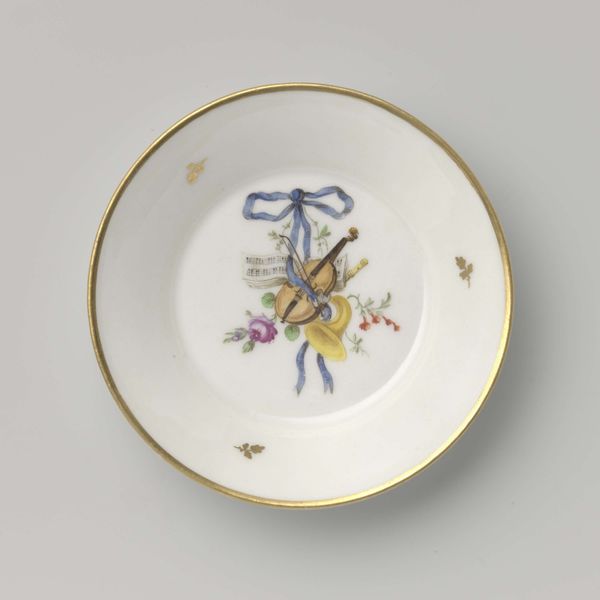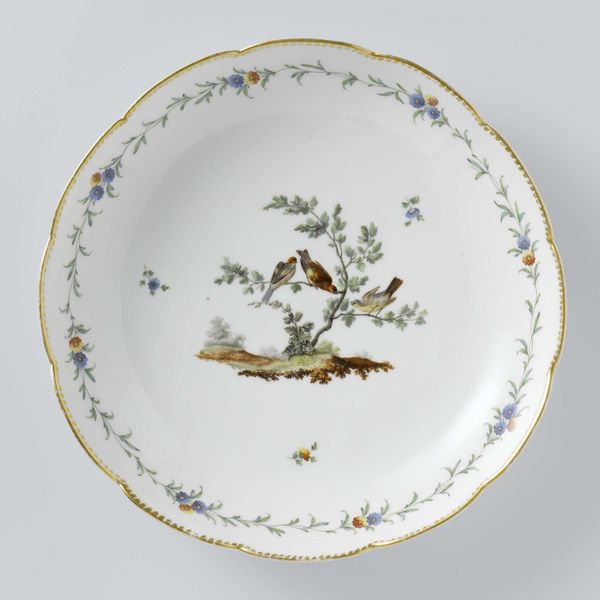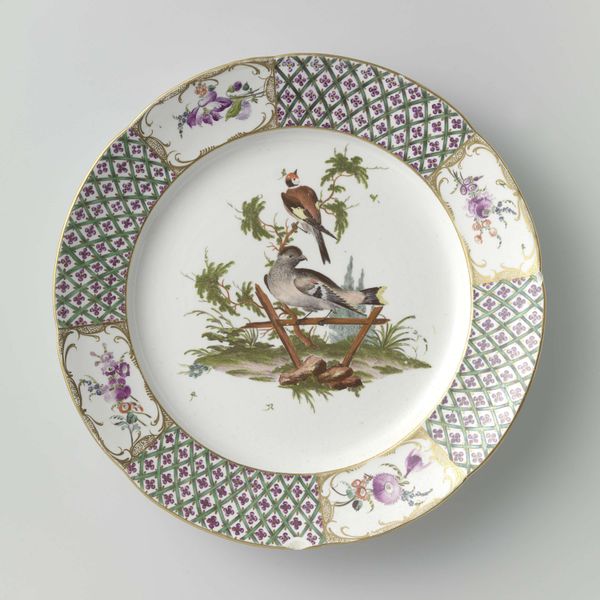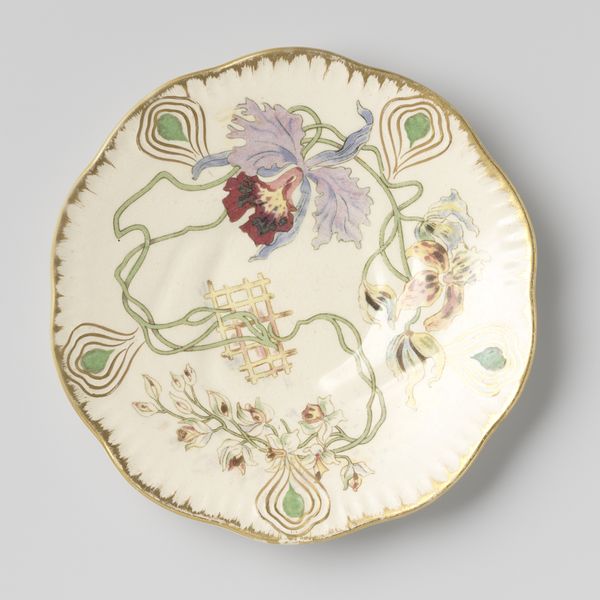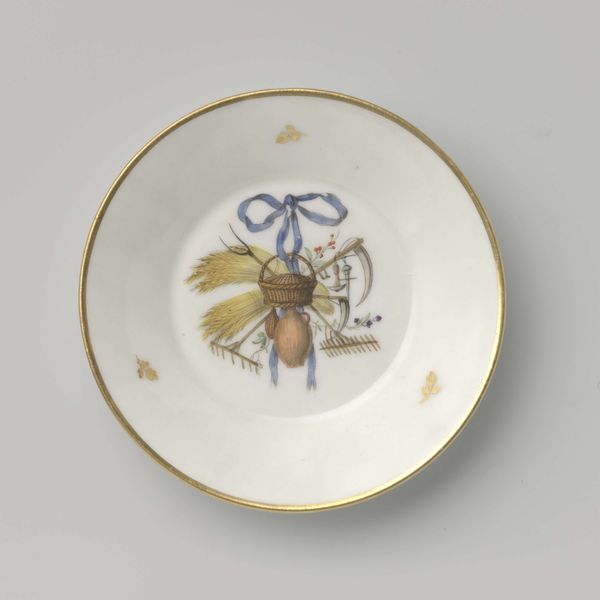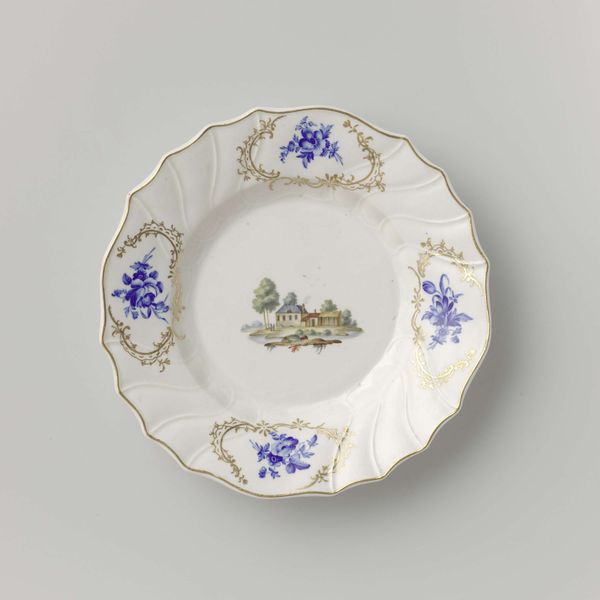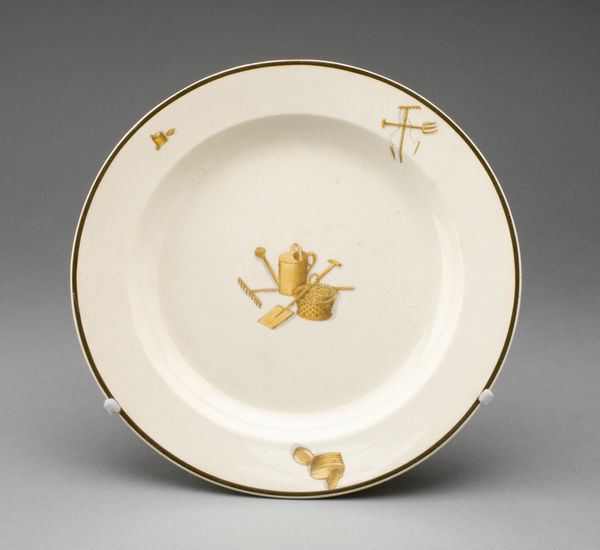
Schotel behorend bij een theeservies met decoratie van trofeeën aan gestrikte linten before 1814
0:00
0:00
koninklijkeporseleinfabriekdommerco
Rijksmuseum
Dimensions: height 2.4 cm, diameter 13.2 cm
Copyright: Rijks Museum: Open Domain
Curator: The pristine white porcelain and the delicate ornamentation of this saucer offer a glimpse into the material culture of early 19th-century Holland. Made before 1814 by the Koninklijke Porseleinfabriek Dommer & Co., it is part of a tea service and features meticulously rendered trophies suspended from a ribbon. Editor: My initial impression is one of gentle leisure—a celebration of leisurely pursuits elevated to an aristocratic register through the Rococo style's ornamentation and porcelain as a medium. Curator: Absolutely, the visual elements coalesce to suggest an aristocratic sensibility. The composition relies on a centrally positioned motif with symmetrical weighting, and then further visual tension is built through the contrast between the hard lines of hunting implements and the soft, flowing lines of the ribbon and foliage. Note, too, the delicate stippling and watercolor-like quality in the trophies themselves, a sign of skilled painting. Editor: Speaking of skill, the materiality speaks volumes. The fine porcelain would have been produced through extensive labor involving sourcing materials, molding, firing, painting—each stage requiring expertise. It highlights the intense networks required to produce this luxury item for the tea table. Curator: Indeed, we could analyze these "trophies" themselves as signifiers of elite activity. The trophies symbolize status and wealth translated into visual rhetoric. Further, consider how this object—originally purely utilitarian—became, through decoration, elevated to the aesthetic. Editor: Right. The question is, who exactly was drinking from these cups, and who made it? This factory provided wares that upheld elite tastes, reinforcing a social order dependent on exploitative labor and colonial trade for things like tea. We can see through this object how labor and material resources upheld power structures. Curator: Ultimately, the saucer is a well-considered aesthetic statement. The piece uses symmetry and the balance of hard/soft visual elements to elevate leisure into an abstract artform, and is, at its core, a visual performance meant to represent wealth and power through symbolic refinement. Editor: So we end with a decorative object illustrating a material and social hierarchy expressed through skill, labor, trade, and those pastel trophies that denote belonging and class. A delicate vessel carrying quite a bit of weight.
Comments
No comments
Be the first to comment and join the conversation on the ultimate creative platform.

